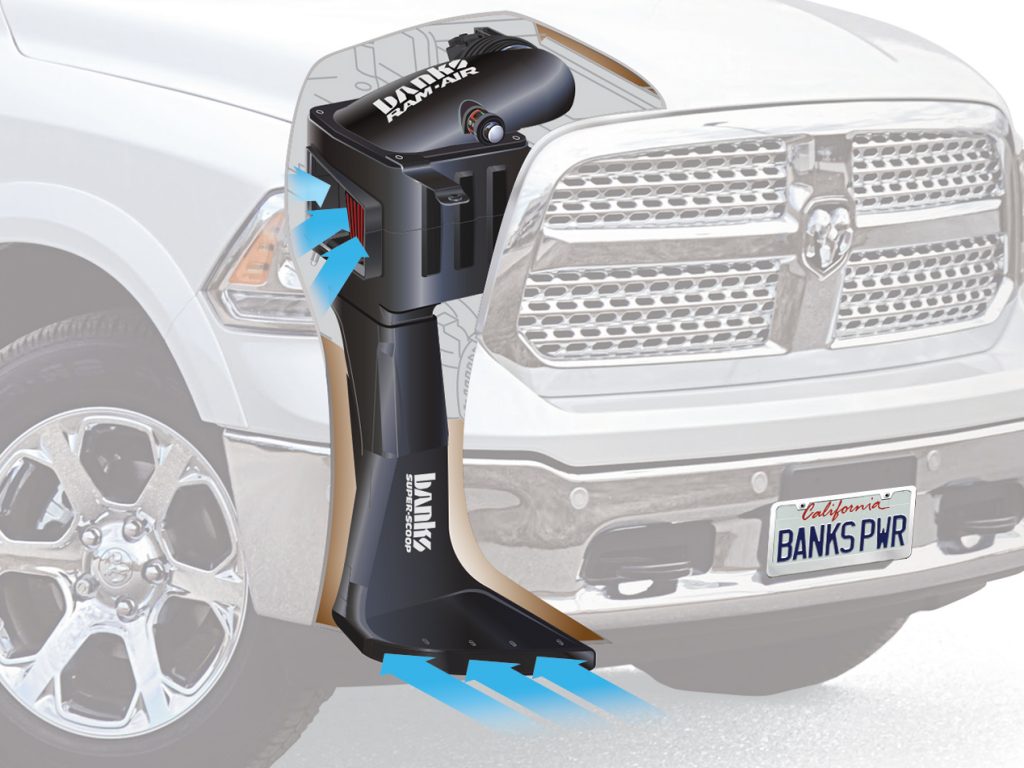2017 Duramax “Hoodie”
There’s something different about the 2017 L5P Duramax. Well… there’s a lot different, actually, and we’ll cover a lot of those differences more in depth in the coming weeks. For right now let’s take a look at something that would normally be passed over as phony-bologna vents that only make the vehicle design look aggressive, but in real life actually serve no purpose other than adding to the vehicle’s plastic content. We’ve all seen it before: fake air vents on the hood, fake air vents on the fenders, fake brake-cooling vents… and the list goes on. Then there are those rare times where things are designed for a purpose, and they actually work! The 2017 Duramax with the new L5P is one of those rarities.
Take a look at this new truck’s hood and you’ll find an honest to goodness air scoop. This Duramax powered pickup truck has a cold-air induction hood… on purpose! It’s no design flaw. According to Chevrolet, the designers worked on this design that supplies 60 percent of the air to the turbocharger, while the airbox draws the remaining 40 percent from the fender. The result is an air density charge into the compressor as close to outside ambient air as possible, and it does this without sucking up water and other debris because the system was fully tested and tweaked in the lab as well as every weather environment. That environmental testing included the Eisenhower Tunnel, which is the highest vehicle tunnel in the world with virtually the highest elevations for a road in North America. Up there density stinks, but the system was designed to provide the coolest air possible straight from the factory. In this case performance starts with the air you’re driving thru.

At Banks we’ve been working off the principals of “sucking in and spitting out” air for decades. Gale has a favorite saying: “It’s all about airflow.” And it’s this airflow that helps engines make power in many ways. It is also true that the more air you can flow through an engine the more oxygen that will be available for burning fuel. More oxygen ingested means more fuel can be burned, and that means more power. Maybe his saying should be changed to be “It’s all about oxygen content.” That’s one of the reasons why as a young hot rodder Gale used a system much like the new Chevy’s hood when he raced at Bonneville, only this was ramming in cooler air though an intake that replaced one of his Studebaker’s headlights. The altitude at Bonneville make for poor density, so any trick to gain that oxygen-rich density helped. We use that same hot rodder’s mentality on our Super Scoop® designs for both motorhomes and most of our diesel intake systems. Air is rammed in at the front of the vehicle providing the coolest, most oxygen rich air possible. It’s also the reason why our intake systems are always enclosed, because sucking in air from under the hood with an open-air filter is detrimental to your performance. When you have one of these so-called “cold-air” or “short ram” intakes your engine is inhaling hot underhood air, which is deprived of oxygen… even when you use one of those little fences with the weather stripping at the top.
Many hot rodding tricks relate to getting more air (read oxygen) into the cylinder. Whether it’s by installing a less restrictive intake system such as our Ram Air intakes, a freer flowing intake manifold, porting the cylinder head(s), increasing camshaft lift or duration… the purpose is still the same: get more oxygen into the cylinder. Now in all fairness, the hot rodder is looking at getting maximum oxygen into the cylinder at wide open throttle for peak power (to beat the other guy). This is partly why nitrous oxide (an oxygen-rich gas) injection is so effective. Nitrous oxide effectively increases the percentage of oxygen in the working fluid (which becomes a mixture of air, nitrous oxide, and fuel) above the 21 percent oxygen in air alone. That means more fuel can be mixed into the working fluid too for greater combustion heat to expand the working fluid and increase pressure in the cylinder. Additionally, when the compressed nitrous oxide (which is stored in its pressurized container as a liquid) is injected it depressurizes and changes state from a liquid to gas, cooling the working fluid for an accompanying density increase. Of course, it would take an incredible amount of nitrous oxide to be able to use it at all times, so nitrous oxide injection is only used on demand at wide open throttle. But let’s be ordinary, street-driving citizens and take out the laughing gas… and the rule of cooler, denser, more oxygen enriched air still applies.
After applying our “airflow always first”… I mean “oxygen-packed” air rule fuel economy improves. If you consider what I said above, you realize that mileage must come with the bargain. Hot engines drain power: by increasing airflow and density engines run cooler. Engines that have diminished airflow (i.e., “pumping losses”) must work harder to produce horsepower and torque. We’ve always removed factory restrictions to flow in more cold, dense air at the intake, and run a free-flowing exhaust that actually extracts exhaust-gas as part of the equation. Engines that are starved for air waste fuel: with higher-pressure air in the cylinders, the fuel that is introduced into the combustion chambers is not wasted. The bottom line is, when proper airflow is present, performance and mileage can’t help but improve.
This new Chevy Duramax has some great feature designs and DNA already in it right off the showroom floor. We can’t wait to see what we can do with it, and especially the L5P engine.
Till next time have a powerful week!




